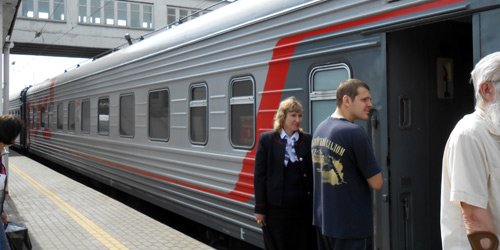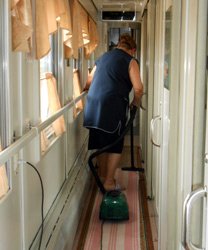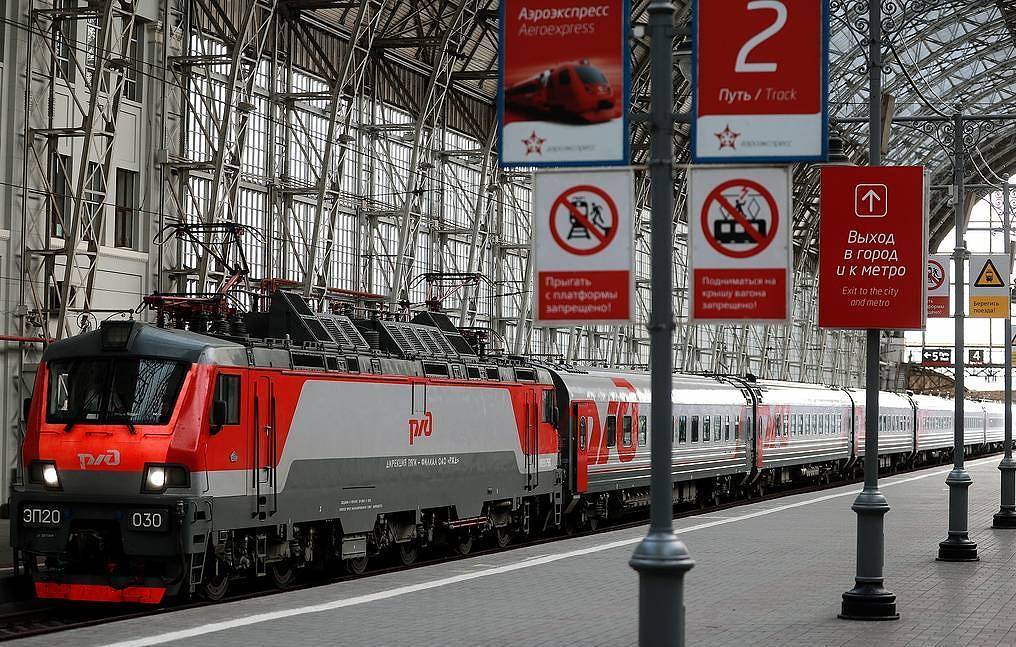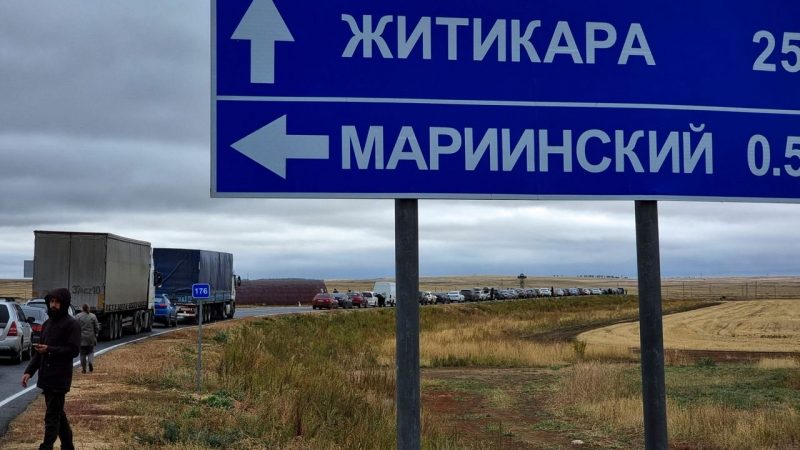Blog layout
Traveling by Train Inside Russia


Booking tips :
-
Booking opens 90 days ahead for most trains. From April 2019, a handful of trains including the Moscow-St Petersburg Red Arrow and (for summer) all Sapsan trainswill open up to 120 days ahead.
-
Train fares in Russia are not particularly expensive, although there have been significant price rises over the last few years. Moscow-St Petersburg on a top-quality firmeny sleeper train such as train 1/2 Krasnaya Strela costs around 3,200 roubles. On a lower quality Moscow-St Petersburg overnight train such as train 56, you can find kupé tickets for as little as 2,260 rubles, platskartny berths for 1,400 rubles, though I'd still recommend taking the better trains.
-
Look for trains described as firm, short for firmeny which is the top quality category of long-distance fast train with the most modern coaches and a high standard of on board service.
-
Russian fares vary by season. Higher fares are charged at Easter, New Year, July & August, lower fares in January & February. Higher fares are charged for the fast high-quality firmeny trains, lower fares for slower unnamed low-quality trains.
-
On the best trains you can buy tickets either 'without services' (no meals) or 'with services' (meals included, either served in the restaurant or in your compartment). A number against a knife & fork logo on the Real Russia booking system or a 'У' with a number in the 'category' column on rzd.ru indicates the total number of meals you get with a 'with services' ticket, it might be just one or two even on a journey lasting several days. An example of the sort of meal served can be seen in these photos from the Moscow-Irkutsk-Vladivostok Rossiya.
-
Trains used to run to Moscow time in Russia, even where local time was 7 hours ahead of Moscow, and Russian rail timetables used to show Moscow time for all stops. However, after over a century RZD Russian Railways ended this practice in August 2018, and you should now find online booking systems and station timetables showing local time at each stop. It makes things a lot easier to understand!
-
Children: In Russia, one child aged 0 to 4 travels free, children aged 5 to 9 travel at half fare, children aged 10 and over must pay full fare. Important: Note that unlike trains in most of Europe, on Russian trains even infants and babies travelling for free must have a (free of charge) ticket with their name on it.

Buy tickets online at rzd.ru...
You can also now buy Russian train tickets direct from Russian Railways at www.rzd.ru which now has an English version. It's a bit fiddly and not as user-friendly as Real Russia, but there are no fees and it does work if you persevere. It accepts some overseas credit cards, though not all. It may currently reject US-issued cards, though perhaps not all.
How to buy tickets at the station
The cheapest place to buy Russian train tickets is at the station reservation office. Here are some tips:
-
Remember to take your passport, even if you only want a Russian domestic train ticket.
-
Russian train reservations open 60 days before departure, you can't buy tickets before reservations open.
-
Russian Railways have an efficient computerised reservation system, and you can book any journey within or out of Russia at the reservation office at any Russian railway station.
-
To avoid language problems if you don't speak Russian, it's a good idea to learn the Russian alphabet so you can write down the journey and date you want to show to the ticket office staff. When writing dates, use roman numerals for the month, or example for '3 June 2008' write '3 VI 2008'.
-
People often ask me, "If I go to the ticket office the day before I want to travel, will I find tickets available?". Well, if you know the Russian alphabet, you can check how many berths in each class are still available on any train on any date within the next 60 days using the Russian Railways website, www.rzd.ru. So you could see how many berths are left today on trains from (say) Moscow to St Petersburg tomorrow or the day after. This will give you a pretty good idea of how many places are likely to be available if you ask at the station a day or two before departure.
-
Many main stations have a 'servis tsentr' (service centre) where you pay a small fee (about 100 rubles) to book your ticket in a relaxed air-conditioned environment. The extra 100 rubles can be well worth it!
Security. Are Russian trains safe for families or single women?
Yes! There is no need to worry unduly about security on Russian trains, even for families or women travelling alone. How do you think Russian families or solo women travel? By train, of course, like everyone else! Just use common sense as you would in a hotel, locking your door at night and not leaving valuables unattended in your compartment. In addition to the normal lock on the compartment door, 'Spalny Wagon' and 'kupé' compartments have a security latch which stops the door opening more than an inch or two, and which cannot be released from outside. There's also a safe place for your bags at night - if you have a bottom bunk, there is a metal box underneath the bunk which you can only get to by lifting up the bunk - in other words, for anyone to get to your bags, they will have to shift you off your bunk first..! Your provodniks will probably also lock the access doors at each end of the corridor at night to prevent unwanted guests. Men and women share the same compartments in Russia, but it's generally quite safe for women travelling alone. If you're a woman and find yourself in sharing with three men that make you uncomfortable, just ask the provodniks (carriage attendants) if they can move you.
Travelling inside Russia by Bus or Car

Travel By Bus inside Russian Federation
In this Article we will talk about the possibility's to Travel by Bus inside the Russian Federation and the cost that it's involve, also we will list the Main Bus company's to Travel inside Russia and also to Arrive From Abroad to Russia.
The cost to Travel by Bus is significantly Lower than the cost to Travel by Car if you are alone as the expense for Fuel are divided, this is logic.
City Transport
In Russian cities and towns you can get around by metro, bus, tram, trolleybus, and private fixed-route taxi. There are underground systems in Moscow, St. Petersburg, Novosibirsk, Nizhny Novgorod, Samara, Kazan, Yekaterinburg, and Volgograd. The larger the city, the higher the fare. In Moscow one journey will cost you 57 roubles*, in St. Petersburg 55 roubles*, in Yekaterinburg just 32 roubles.* A journey by public road transport (bus, trolleybus, tram) will cost you 57 roubles* in Moscow, 50 roubles* in St. Petersburg, 30 roubles* in Kazan, and 22 roubles* in Tomsk.
Students on full-time courses at Russian universities can purchase tickets on public transport at discounted prices. Passengers pay cash in fixed-route taxis and no discounts are offered. Discounts for students: monthly travel with a student social card costs 5 times less than a regular ticket. As soon as you get a student card, arrange a student travel or social card (depending on the city). Learn more in the "Benefits for Students in Russia" section. Before you receive your travel card, you can still save on regular travel cards using various tariffs. It is not worth buying tickets for 1 or 2 journeys. A travel card for several journeys (5 or more) will work out cheaper: the more journeys you purchase, the cheaper they become. In Moscow, you can also buy a travel card at the "90-minute" rate, which allows you to make as many journeys as you like within an hour and a half, using both the underground and/or public road transport.
Similar tariffs apply in other Russian cities as well. Tickets on public road transport can be bought from the driver, but they will be much more expensive than from ticket offices or special kiosks.
Public bus transportation companies in Russia tend to be government-owned, either locally or regionally. Some of the bus companies in Russia’s larger cities include the following:
-
Chelyabinsk (Челябинск): Obshchestvennyy Gorodskoy Transport (Общественный городской транспорт) (in Russian)
-
Kazan (Казань): Transportnyy Goroda Kazani (Транспортный города Казани) (in Russian)
-
Moscow: Mosgortrans (Мосгортранс) (in Russian)
-
Nizhny Novgorod: Nizhegorodpassazhiravtotrans (Нижегородпассажиравтотранс) (in Russian)
-
Novosibirsk (Новосибирск): GorElektroTransport (ГорЭлектроТранспорт) and Novosibirsk Avtobus (Новосибирский автобус) (both websites in Russian)
-
Omsk (Омск): Omskiy Avtobus (Омский автобус)
-
Rostov-on-Don (Ростов-на-Дону): various companies with no central authority or service provider. Rostov Transport has route and fare information in English.
-
Saint Petersburg: Gorelektrotrans (Горэлектротранс) and Passazhiravtotrans (Пассажиравтотранс) (both websites in Russian)
-
Samara: SamaraAvtoGAZ (СамараАвтоГАЗ) (in Russian)
-
Yekaterinburg (Екатеринбург): Gortrans (Гортранс)
There is no set system of fares for bus transportation in Russia. Some cities have a uniform fare, regardless of mode; others have bus-specific pricing or even route-specific pricing.
Payment methods also vary. Moscow, for instance, encourages contactless fare collection through a bank card or smartphone, while other cities are strictly cash-only domains.

Driving your Own Car Inside Russia
Who can drive in Russia?
If you’re staying in Russia for less than six months, you can use your foreign license; a Russian translation is necessary, though. Whenever you drive in Russia, you must show anInternational Driving Permit( IDP) along with your foreign license, or another type of authenticated Russian translation. You can apply for an IDP your home country, which provides a translation of your license into nine languages.
If you’re moving to Russia as an official resident, you’ll need to exchange your foreign license for aRussian driving licencewithin 60 days after receiving Russian residency.
You also need to meet the minimum legal driving ages as set out by Russian road law: 18 for cars and 16 for motorcycles. You won’t be able to start driving in Russia below this age, even if you have a foreign license already.
Who needs a Russian driving license ?
To apply for a Russian driving license, your local State Road Traffic Safety Inspectorate (GIBDD) can provide information. In Moscow, for example, you’ll need to provide the Moscow Road Policeyour passport and Russian visa, a medical certificate obtained from your doctor, your foreign driving license, and a photocopy of the license signed by a notary.
If your foreign license is valid, you’ll only need to take a Russian theory test. If it has expired, you’ll have to pass the practical driving exam, too. The process is cheaper than in many European countries. However, it can be tricky; you can only take the theoretical and practical tests in Russian. Read Expatica’s guide for more information on getting a Russian driving licence.
Requirements for driving in Russia
The State Inspection for the Safety of Road Traffic (GIBDD) is Russia’s traffic police division, although many people still call it by its old name – the GAI. When driving in Russia, random vehicle stops are common for checking that you’re carrying the appropriate documents and that they’re up to date.
Russia operates a zero-tolerance for drinking laws in Russia. Alcohol checks are most common on weekends and Monday mornings; if you fail a test, you’ll need to give a blood sample. There are also some areas in Moscow where saliva tests to trace narcotics are being trialed.
Russian road rules require you to carry the following when driving in Russia:
-
A warning triangle
-
Headlight beam deflectors
-
First-aid kit
-
Fire extinguisher
-
Spare light bulbs.
You should also carry your Russian driving licence or international driving permit, proof of auto insurance in Russia, passport and proof of vehicle ownership. If you fail to carry these items you could face a fine.
Road and car taxes in Russia
An annual vehicle tax is payable in Russia, but how much you’ll pay varies from region to region. All taxes are payable to the Federal Tax Service of Russia. In Moscow, for example, the price depends on the engine power of your car rather than its emissions. The fees are as follows:
-
100 horsepower automobile: RUB 700
-
120 horsepower automobile: RUB 2,400
-
200 horsepower automobile: RUB 12,000
-
300 horsepower automobile: RUB 45,000
Toll roads in Russia
Toll roads are relatively new in Russia and relatively rare. The Lipetsk Highway (M-4) from Moscowto Novorossiysk charges R10, and you’ll need to pay this fee in cash. Some toll roads outside of the capital allow you to pay using a card. However, you should carry some cash when driving in Russia.
Car insurance in Russia
Since 2003, every car owner in Russia must have an insurance policycovering third-party liability at the very minimum. However, the coverage from the mandatory, basic auto insurance in Russia is not very comprehensive. Drivers can consider adding voluntary car insurance to top up their coverage to include the driver as well.
Vehicle inspections in Russia
Cars in Russia periodically have to undergo a technical inspection. One of the major requirements for driving in Russia is that vehicles between three and seven years old need be inspected every two years, while older cars must have a yearly inspection.
As this inspection is conducted in Russian, you may need a translator to understand the results. Once the car has successfully passed the tests, you’ll be given an inspection card. You’ll need to carry this in the car at all times. If you don’t have the inspection done on time, you could receive a large fine or have your car confiscated.
Traffic rules in Russia
Some of the key traffic rules in Russia include the following:
-
You must drive on the right-hand side of the road.
-
The driver and all passengers must wear seatbelts.
-
Using your mobile when driving is illegal (without a hands-free kit).
-
Picking up hitchhikers is illegal.
-
Turning right at a red light is only possible if there is a filter system.
-
It is prohibited to turn left in large towns other than at crossings with lights.
-
Crossing a solid double white line is illegal.
-
It’s illegal to drive a dirty car.
-
Traffic coming from the right has priority at roundabouts.
-
Only use the horn in towns if there is immediate danger.
-
Children under the age of 12 can’t travel in the front seat of a car without a child seat.
General speed limits in Russia
Speed limits vary depending on the vehicle you’re driving in Russia and the area you’re driving in.
For motorcycles and cars under 3.5 tonnes, the limits are generally 60km/h in built-up areas and 110km/h on expressways and other roads. Larger vehicles and those with trailers, however, can only drive at up to 90km/h on expressways and 70km/h on other roads.
In some residential areas, there is a 20 km/h speed limit for all vehicles. This should be clearly signposted.
If you’re charged with a minor violation, you’ll be issued with a fine that you’ll need to pay through a bank, as the Russian police are no longer allowed to ask for cash. For more serious violations, vehicles can be temporarily confiscated, but can only be permanently taken away for you following a court decision. You can find a list (in Russian) of the various driving and parking fines . If you pay your fine early, you can be granted a discount on your fine.
There is a relatively high rate of car accidents in Russia, which some put down to the poor driving conditions, narrow roads (more so out of the main cities), and fast Russian drivers. In some circles, Russian drivers have earned a reputation for bad driving, involving weaving in and out of traffic, fast speeds, and disrespect for road rules, such as wearing seat belts. In the past, bribes were sometimes accepted for passing the Russian driving test. As a result, some Russian drivers are unaware of the correct road rules. However, driving conditions have become stricter in recent years to improve road safety, as well as the skills of both foreign and local Russian drivers on the road.
Parking your car in Russia
While Moscow has major car parks, much of the on-street parking in Moscow is paid for using meters. When parking in Moscow, you’ll usually need to park on the right-hand side of the road, in the direction of the flow of traffic. In some urban areas and on one-way streets, you can also park on the left-hand side. The letter P and a wheelchair symbol are usually used to signify a disabled parking space. Around Russia, varying parking systems are available, depending on the size of the city or town.
You cannot park within 5m of an intersection or pedestrian crossing, on bends, or within 50m of a level crossing. If you’re caught parking in Russia illegally, you’ll either be given an on-the-spot fine or you could have your wheels clamped.
Importing a car to Russia
Unless you’re a foreign diplomat, it can be expensive and troublesome to import a car to Russia. In many cases, it’s difficult for your removals company to assist with the customs clearance, and you might need to pay steep import duties. Check listing for relocation that can help with importing your car from abroad.
Car rental in Russia
Car rental from a local agency is sometimes cheaper, although it’s less likely that someone will speak English. For more language options or services you’re familiar with, you can consider renting a car through a European or international company.
To hire a car in Russia, you’ll usually need to be at least 21 years of age and have held your Russian driving licence or foreign driving licence for at least a year. People aged below 25 might also need to pay a young driver surcharge.
Buying a car in Russia
It’s possible to buy a car in Russia, although the process is less straightforward process for foreigners. One of the requirements is that your car is registered to your visa. Each time you renew your Russian visayou’ll need to deregister and reregister your car ownership. Alternatively, you can register the car in the name of a Russian friend and have that person provide you with power of attorney to drive it.
When considering which car to buy, always use reputable car dealerships and remember that it might be difficult to export the car back to your home country should you leave Russia.
Registering your car in Russia needs to be done through the GIBDD, although it can also be a complicated process. It’s possible to enlist the help of a third-party company to aid you, although you will have to pay a fee for this service. Once you’ve handed in your completed application (and shown proof of ownership, insurance and the car’s inspection record card if applicable), you’ll need to pay a fee of RUB 2,000 to officially register the car in Russia.
Tips for driving in Russia
For foreigners planning to drive in Moscow, it’s important to know that the city has three main ring roads – the MKAD, Garden Ring and Third Ring – with a fourth ring in the planning stages. The city has problems with traffic jams, especially on the main roads in and out of the city. During rush hour things can be particularly bad, and the Garden Ring (Sadovoe Kol’tso) can suffer from traffic jams all day long.
Some road surfaces in Moscow are also sub-standard, so you’ll need to take extra care, although Moscow’s main roads tend to be better than elsewhere in Russia.
Road signs and names are in Russian, so may be confusing to foreign drivers. You can find examples of road signs in Russia here.
Find more tips in Expatica’s guide on expat life in Russia
